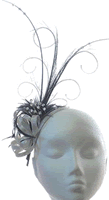Here’s part of a song in a mystery language.
Can you guess the language and where it’s spoken?
Yesterday I learnt how to say thank you in Latvian – paldies /pal’dies/ – from the Latvian lads who delivered and installed my new garden shed. Although they didn’t speak much English, we managed to communicate. When I asked where they were from, they didn’t understand the question, then one of them said, “oh, what country?” and they told me Latvia.
In situations like this when I find myself speaking to people whose language I don’t know and who don’t speak much English, I tend to feel frustrated. Not by their limited English, but by the fact that I don’t know any of their language. It also helps to try saying things in various ways until you find one they understand, as the “Where are you from?” example demonstrates.
Looking at the Latvian phrases on Omniglot, it strikes me that hardly any words look familiar, apart from the lab part of labdien (good afternoon) and labvakar (good evening), which resembles the Lithuanian word labas, which is used for hello, and in such phrases as Laba diena (good afternoon) and labas vakaras (good evening), both of which are similar to the Latvian versions. The words dien (day) and vakar (evening) also resemble their equivalents in Slavic languages such as Czech – den and večer,and Russian – день (den’) and вечер (večer).
Are any of you learning Latvian or planning to learn it?
Last week I looked at quite a few paint colours, trying to decide which ones to use in my house, and found the names given to the different colours interesting.
As there are so many different colours, paint manufacturers use various whys to describe them.
Whites, for example, come in many shades, including:
Some paints have more imaginative names, such as:

What I’ve found is that the same name might be used from different colours. For example, straw is a creamy colour from one paint company, and an orangey-brown colour from another.
I’ve chosen a colour called warm blue for my bedroom, water, a lighter blue, for my music room (the spare bedroom), and buttermilk, a lightish yellow, for my bathroom. The rest of the house is painted magnolia, a kind of creamy-white colour.
Do paint colours have interesting names in other languages?
The other day I was talking to a native Welsh speaker from South Wales who has lived in North Wales for many years. I mentioned that people in shops here sometimes switch to English when I talk to them in Welsh, and she told me that the same thing happens to her sometimes.
Apparently the South Wales accent is associated with Welsh learners, and this applies not just to actual learners, but also to native Welsh speakers from South Wales like my friend, who speaks North Walian dialect with a South Walian accent and therefore sounds a bit like a learner. She also told me that she tries to speak North Walian dialect because people round here find South Walian dialects difficult to understand.
In colloquial spoken Welsh and informal written Welsh there are plenty of differences between northern and southern varieties. Some examples of grammatical differences include:
| North Walian | South Walian | Formal Welsh | English |
|---|---|---|---|
| Mae gen/gin i … | Mae … ‘da fi | Mae gynnyf … | I have … |
| Sgin i … | Sdim … ‘da fi | Does gynnyf … | I don’t have … |
| Mi (w)nes i dweud | Mi/Fe ddwedes i | Dwedais | I said… |
| Ti isio …? | Ti moyn …? | Yr wyt ti eisiau …? | Would you like …? |
The auxiliary verb gwneud (to do) plus the main verb (in this example, dweud – to say) are used to form the past tense in North Wales. In South Wales and in formal Welsh the past tense endings are applied to the main verb, and the personal pronouns are not used in formal Welsh.
Differences in vocabulary include:
I moved into my new house yesterday and am currently having new carpets fitted, which got me wondering about the origins of the word carpet.
Carpet has been traced back to the Proto-Indo-European root *kerp- (to pluck, gather, harvest) via the Old French carpite (heavy decorated cloth), the Middle Latin carpita (thick woolen cloth) the past participle of the Latin carpere (to card, pluck).
*kerp- is also the root of the English word harvest, the Greek καρπός (karpos – fruit, grain, produce, harvest, children, poetry [fruit of the mind], profit); and the Irish ciorraigh (to cut, hack, maim).
Sources: Online Etymology Dictionary and Wiktionary.
Today’s word, paraskavedekatriaphobia, means “fear of Friday the 13th”. It comes from the Greek Παρασκευή (Paraskeví – Friday), δεκατρείς (dekatreís – thirteen) and φοβία (phobía, from φόβος (phóbos) – fear).
An alternative name for this phobia is friggatriskaidekaphobia, which combines frigga (Friday) and triskaidekaphobia (fear of the number thirteen).

I learnt a new word from the radio this morning – fascinator. They were talking about hats and somebody mentions the fascinator, something I hadn’t heard of before.
A fascinator or facinator hat is: “a small headpiece usually mounted on a base, comb or headband worn jauntily to the front or side incorporating a combination of feathers, flowers, coils, curls and other trimmings.” [Source]
Apparently the fascintor was originally a fine, lacy head covering made of wool or lace and like a shawl. It went out of fashion in the 1970s, but has made a come-back recently in a different form. They are almost exclusively worn by women, especially to special occasions like weddings and big race meetings such as Ascot. [Source]